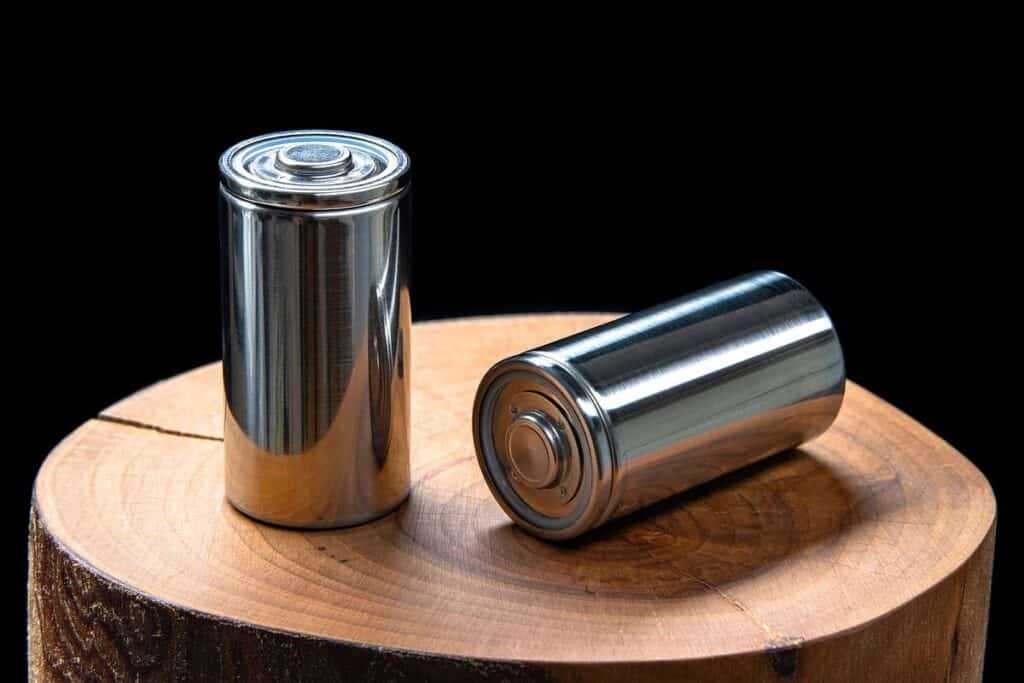6 Sustainable Materials Made from Microalgae and Seaweed
Table of contents

One thing about emerging technologies is that you never know when – or if – they will finally fulfill their promise or fall flat. Take the miracle material graphene. Thin, light, and hard as a diamond, graphene was supposed to revolutionize how we build everything in the future. Not so much. We’ve written about 30 articles on the topic over the last seven years, but graphene technology is still not something we’d invest our money in today because no one can figure out a way to successfully commercialize it. A similar problem exists for a very different kind of material – algae – that is supposed to replace our reliance on fossil fuels for energy, plastic, tech gear and clothing, and much more.
What Can You Do with Algae?
Algae is a catch-all term for a very diverse group of organisms that typically contain chlorophyll and get their energy from sunlight – just like Swamp Thing and the Kardashians. Most of us are familiar with seaweed, including larger varieties like kelp, not to mention the overpriced seaweed salad at your local sushi restaurant. There are also numerous species of microalgae known as phytoplankton. Both types grow incredibly fast, so they’re nearly infinitely renewable. More importantly, they’re a material that can be manipulated into many of the same products as petroleum.
A number of companies are trying to figure out ways to commercialize both kinds of plant-like species, some of which we’ve already covered, like those converting algae into food, fuel, and plastic. Then there are those companies trying to turn pond scum into high-tech fabrics or materials – all under a green veneer of sustainability that should doubly please ESG-type investors.
Munching on Microalgae
The most obvious application is for food and nutrition, though in less traditional ways than wrapped around a chunk of vinegared rice. For example, in our article about alternative protein sources, we came across Paris-based Algama, a six-year-startup that has now raised about $6.2 million for mayonnaise made with microalgae instead of eggs.
For this article, we found a UK outfit that’s managed to remove the chlorophyll from a species of microalgae called Chlorella vulgaris, which has been consumed for decades in Japan as a supplement or food additive. Founded in 2009, Algenuity has found a way to make the microscopic green algae palatable to palates not trained on salty, fishy goodness. The product maintains antioxidants, vitamins, minerals, and essential fatty acids that help make the Japanese some of the longest-lived people on the planet. Algenuity calls the product Chlorella Colours for obvious reasons:

The company just closed a deal with Unilever (UN), a major manufacturer of food and just about anything else found in your cupboards at home. Unilever has been working on cleaning up its act by investing in greener or alternative plastics, among other initiatives, including how it packages your laundry detergent.
Killing Plastics with Kelp
In one such article on green packaging solutions, we wrote about an early-stage startup out of Denver called Living Ink Technologies that has developed bio-inks using microalgae. While today’s conventional inks are less toxic than the one your granddaddy swallowed in his generation’s version of the Pod Challenge, they’re still pretty nasty and often contain heavy metals like lead or mercury.
Another startup taking the approach that a little change can make a big impact is Loliware out of New Yawk. Founded in 2015, the company has raised $7.9 million, most of it from a nearly $6 million Seed round this year. One of Loliware’s early investors is billionaire Mark Cuban, so naturally the company appeared on an episode of Shark Tank with an idea for edible cups (cannabis not included). Now the company has applied its Intelligent Seaweed Technology to turn giant kelp into biodegradable straws that are tougher than corn-based plastics, licensing the proprietary process to large manufacturers.

Loliware told TechCrunch that it expected to hit more than billion straws this year, with plans to release a bendable straw and other kelp-made kitchenware soon. Considering that Earthlings use an estimated 500 million straws per day, the total addressable market is something like 182.5 billion straws per year. That doesn’t suck.
Surf’s Up for High Tech Algae-based Material
A Berkeley, California startup called Checkerspot is thinking outside the bio-plastic bottle with a genetically modified algae material to build surfboards and skis. Founded in 2016, Checkerspot has nabbed $54 million in total funding, including a $36 million Series B in May.
The synthetic biology company is transforming the microorganisms into tiny factories that can produce oil with special chemical properties that can make gear that rips through snow and seas. The trade magazine Chemistry & Engineering News gets into the technical details of Checkerspot’s sugar-eating microalgae trebouxiophyceae here. The thing that you want to know is that the novel microalgae material produces a polyurethane core for consumer products like surfboards and skis that is light and stiff. The company would eventually like to apply the technology in the automotive and aerospace industries, but is already carving out a niche in snow country with its own line of skis made with AlgalTech:

The core of the ski is made with the company algae-based polyurethane and aspen. Another proprietary algal material provides a natural bond to hold the ski together without toxic adhesives.
Fashion-Forward Algae
Meanwhile, on the other coast, AlgiKnit is trying to clean up one of the dirtiest industries around – textiles. Founded in 2017, the startup has raised $2.2 million in disclosed funding. Employing the same brown kelp that Loliware uses to make straws, AlgiKnit makes an algae-based yarn and textile that is nontoxic and biodegradable. While the company has dabbled in the sort of overpriced designer wear produced by Bolt Threads, which uses a genetically modified yeast to produce a material like spider webs for clothing, AlgiKnit is reportedly looking for partners to scale its technology for the masses.
Carbon Fiber from Algae
While we’re still waiting for graphene to grab the world’s attention, it’s safe to say carbon fiber manufacturing is a mature industry, with products ranging from bicycles to Boeing jets. A German company called SGL Carbon (SGL), which specializes in carbon and graphite materials and composites, is working on an algae-based carbon fiber that is identical to the current material. The idea is to turn green algae into a sink for carbon dioxide to produce glycerin, which can be processed into the organic compound acrylonitrile – the building block for carbon fiber. Additional R&D is focused on combining these algae-based carbon fibers with hard rock to produce novel construction materials that are lighter than aluminum and stronger than steel. There are no commercial products as of yet.
Going Nowhere with Biofuels
Last but not least, we come to algae-based biofuels, a technology that leverages the high lipid content in green microalgae. It’s a topic we’ve written about nearly as much as graphene – and with similarly disappointing results. We’ve covered some of the big players converting algae into fuel like Pond Technologies, Synthetic Genomics, Sapphire Energy, and Joule. Pond Technologies is a publicly traded Canadian company with a teeny tiny market cap of $7 million. Both Sapphire Energy and Joule faded out of existence in 2017.

Synthetic Genomics appears to still be working with ExxonMobil on a program that (in a press release dated 2018) could lead to the technical ability to produce 10,000 barrels of algae biofuel per day by 2025. Staked to $160 million in funding, the 15-year-old startup out of San Diego is attempting to genetically manipulate microalgae to produce diesel and jet fuel at scale. The company has opened an algal cell factory in La Jolla, California:

Synthetic Genomics is also developing a range of both algae and non-algae technologies around its genomic R&D platform. That includes replacing unsustainable palm oil in food and cosmetics with microalgae to engineering pig cells to generate humanized pig organs for transplantation. Talk about multi-tasking.
Conclusion
This is not meant to be a comprehensive list of applications or companies working to transform algae into a planet-friendly super material. We could have told you about a Canadian startup called Noblegen, which has raised $28 million to turn a weird algae-yeast hybrid, Euglena gracilis, into a nutrition superstar by using it to replace everything from eggs to palm oil – all without genetic engineering. Or a new Australian government-funded company, FutureFeed, that wants to put methane-belching cows on a seaweed diet, which could reduce emissions by 80%.
And so on.
The thing for investors to keep in mind is that much of this technology and innovation is still in the experimental phase. The most likely applications to gain traction in the near future are for human and animal nutrition. The latter is especially appealing, as farmers and ranchers look for ways to improve animal health on the cheap. The big news this month that Paris-based Ynsect extended its Series C round to $372 million, bringing total funding to $425 million, is an indication that the world is getting serious about insect-based animal feed and pet food. The question is whether algae production and processing can be cost-competitive in the same market. We should have an answer in the next few years.
Sign up to our newsletter to get more of our great research delivered straight to your inbox!
Nanalyze Weekly includes useful insights written by our team of underpaid MBAs, research on new disruptive technology stocks flying under the radar, and summaries of our recent research. Always 100% free.




















Turns out that CO 2 is one of the heavier gases and concentrates at lower elevations. That plankton farm in the low desert outside La Jolla (times 1000) might be a natural air purifier. Plus, think of all the pig’s hearts they could make!
The future is definitely going to be more weird than we can imagine.
When tasting so many plant-based protein powders, it was off-putting to see just how many products contain an unpleasant aftertaste from stevia leaf or monk fruit.
Good point. The same holds true for all plant-based products that are supposed to displace something that tastes just fine as it is.